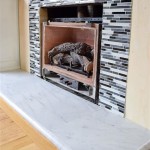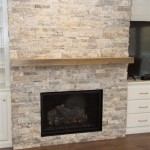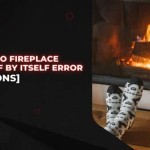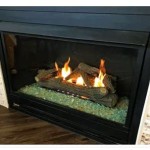```html
Propane Heaters That Look Like Fireplaces: A Blend of Aesthetics and Functionality
The demand for home heating solutions that offer both efficiency and aesthetic appeal has led to the rise in popularity of propane heaters designed to mimic the look of traditional fireplaces. These appliances provide the ambiance of a classic fireplace without the mess, maintenance, and complexities associated with wood-burning or even natural gas counterparts. They offer a viable alternative for homeowners seeking supplemental heating, visually appealing design, and ease of use.
Propane fireplaces, also known as propane log sets or propane fireplace inserts, are available in a wide range of styles, sizes, and BTU (British Thermal Unit) outputs, allowing consumers to choose an option that best suits their specific needs and preferences. The visual aspect is a key differentiating factor, with manufacturers engineering realistic-looking artificial logs, glowing embers, and flame patterns to replicate the charm of a conventional fire.
Understanding the Appeal: Aesthetics, Convenience, and Efficiency
The primary allure of propane heaters that resemble fireplaces lies in their ability to create a cozy and inviting atmosphere. The realistic flame and log designs, coupled with the gentle warmth they radiate, evoke a sense of comfort and relaxation. This is particularly appealing in spaces where installing a traditional fireplace is impractical or impossible due to construction limitations, cost considerations, or regulatory restrictions.
Furthermore, propane fireplaces offer a significant level of convenience. Unlike wood-burning fireplaces that require manual fuel loading, chimney cleaning, and ash disposal, propane models operate with minimal effort. Many feature electronic ignition systems and remote controls, enabling users to adjust the flame height, temperature, and even set timers with the touch of a button. This ease of operation makes them a practical heating solution for individuals of all ages and abilities.
From an efficiency standpoint, propane fireplaces represent a considerable improvement over traditional wood-burning fireplaces. Wood-burning fireplaces often suffer from significant heat loss up the chimney, whereas propane models are designed to maximize heat output and minimize energy waste. Modern propane fireplaces often boast efficiency ratings between 70% and 90%, which translates to lower heating costs and reduced environmental impact compared to their wood-burning equivalents. The accurate and controlled heating offered by propane also avoids the overheating often associated with wood-burning, making them a more consistent heating solution.
Key Features and Considerations When Choosing a Propane Fireplace
Selecting the right propane fireplace involves careful consideration of several factors. Size and BTU output are critical, as these determine the heater's ability to effectively warm the intended space. A unit that is too small will struggle to maintain a comfortable temperature, while one that is overly large can lead to inefficient operation and discomfort.
The aesthetic design is another important consideration. Propane fireplaces are available in a variety of styles, ranging from traditional log sets to more contemporary linear designs. The choice should be guided by the overall décor of the room and the homeowner's personal preferences. Pay close attention to the realism of the artificial logs and the quality of the flame pattern, as these elements significantly impact the visual appeal of the fireplace.
Safety features are paramount when choosing any heating appliance. Look for propane fireplaces that are certified by reputable organizations such as the CSA (Canadian Standards Association) or UL (Underwriters Laboratories). These certifications indicate that the heater has been rigorously tested and meets established safety standards. Essential safety features include oxygen depletion sensors (ODS), which automatically shut off the heater if oxygen levels in the room become too low, and safety shut-off valves that prevent gas leaks. Carbon monoxide detectors are always advised, regardless of safety features.
Venting requirements also play a significant role in the selection process. Propane fireplaces can be categorized into vented and vent-free models. Vented models require a chimney or vent to expel combustion byproducts to the outside, while vent-free models do not. Vent-free models are generally more convenient to install, as they do not require any modifications to the existing structure. However, they are subject to stricter regulations in some areas due to concerns about indoor air quality.
Finally, installation and maintenance should be factored into the decision-making process. While some propane fireplaces can be installed by homeowners with basic DIY skills, others may require professional installation. Regular maintenance, such as cleaning the burner and checking the gas connections, is essential to ensure safe and efficient operation.
Types of Propane Fireplaces: Inserts, Log Sets, and Freestanding Units
The market offers different types of propane heaters, each with its own specific advantages and applications. Propane fireplace inserts are designed to be installed within an existing fireplace opening, converting a traditional wood-burning fireplace into a propane-fueled unit. They provide a convenient and cost-effective way to upgrade an outdated fireplace without the need for extensive renovations.
Propane log sets, on the other hand, are intended to be placed directly into an existing fireplace firebox. They typically consist of a set of artificial logs, a burner assembly, and a control valve. Log sets are relatively easy to install and offer a simple way to add the ambiance of a fireplace to a room. However, they may not be as efficient as fireplace inserts, as they do not fully seal the fireplace opening.
Freestanding propane fireplaces are self-contained units that can be placed anywhere in a room, provided there is a suitable gas connection. They are available in a variety of styles, from traditional to contemporary, and offer a versatile heating solution for various spaces. Freestanding models often incorporate decorative elements such as mantels and hearths, further enhancing their visual appeal.
Each type offers advantages depending on the room construction and individual desire for heat and aesthetics. Careful consideration of the type should be part of the decision-making process.
The initial cost of a propane fireplace can vary significantly depending on the type, size, features, and brand. Fireplace inserts and freestanding units tend to be more expensive than log sets, while models with larger BTU outputs and advanced features command higher prices. It's important to consider the long-term operating costs, including the price of propane and the efficiency of the heater, when evaluating the overall cost-effectiveness of different options.
The cost of propane can fluctuate depending on market conditions and geographical location. It's advisable to compare prices from different propane suppliers to secure the best possible rates. Propane fireplaces with high efficiency ratings will consume less fuel, resulting in lower heating bills over time. Proper insulation and draft proofing of the room can also help to minimize heat loss and reduce energy consumption.
When buying a propane fireplace, it's essential to consider building codes and regulations. Some jurisdictions have specific requirements regarding the installation, venting, and safety features of propane heaters. It's advisable to consult with a qualified contractor or local building official to ensure compliance with all applicable codes. Failure to comply with building codes can result in fines or the need to remove the fireplace.
The availability and access to propane are another important consideration. Propane is readily available in most areas, but it's essential to ensure that there is a reliable supply source. Homeowners who live in remote areas may need to consider the logistics of propane delivery and storage. In some cases, it may be necessary to install a propane tank on the property.
Maintenance of a propane fireplace is relatively straightforward, but it's essential to follow the manufacturer's instructions carefully. Regular cleaning of the burner and ventilation system is necessary to ensure optimal performance and prevent the buildup of carbon monoxide. It's also important to inspect the gas lines and connections periodically for leaks. Any signs of damage or malfunction should be addressed promptly by a qualified technician.
With careful planning and diligent maintenance, propane fireplaces that resemble traditional fireplaces can provide years of reliable heating and aesthetic enjoyment. Their blend of convenience, elegance, and fuel efficiency makes them a compelling option for homeowners looking to enhance their living spaces.
```
Radiance Vent Free Gas Stove The Place

Comparing Wood And Propane Heat Tiny Stove

Thelin Gnome Gas Stove Hearth S Great American Fireplace In Menomonie Wi

Propane Fireplaces Gas Stoves Id Mt Wy Fall River

Vintage Mantle With Gas Heater Repurposed Propane Wall Heaters Fake Fireplace

Do Gas Fireplaces Heat A Room Contact The Flame Company Today

Free Standing Gas Fireplace Propane Contemporary

How Much Does An Outdoor Heater Cost Pros Cons

Top Benefits Of Installing A Propane Fireplace

Propane Fireplaces Flame Failure Control Valveskit For Grill Heater Fire Pit








